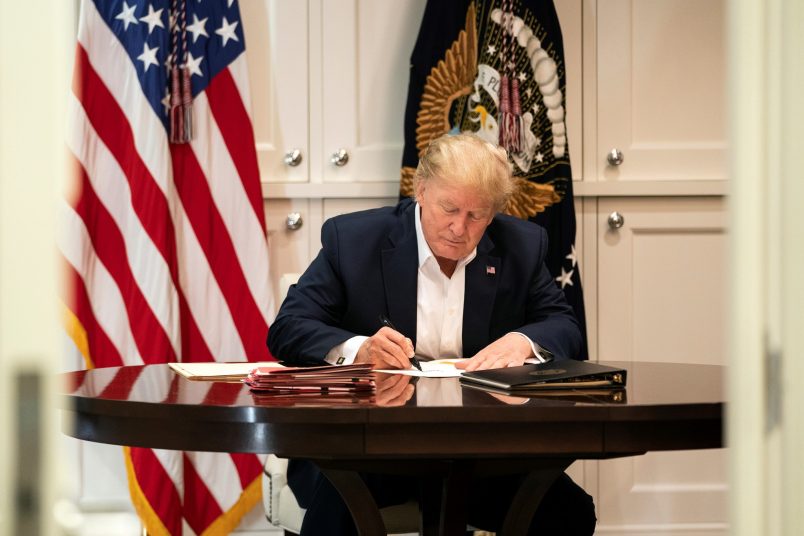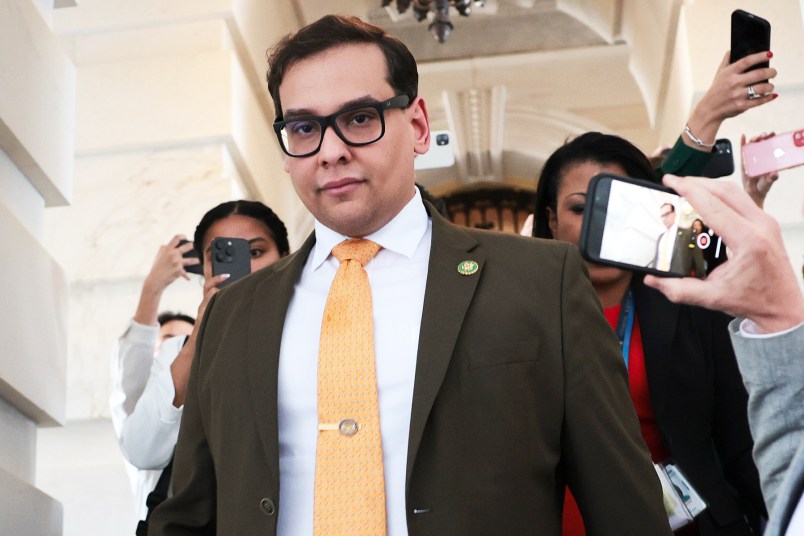Former President Trump finally articulated clearly in a Wednesday night interview with Fox News’s Sean Hannity an argument that he and his attorneys have been suggesting for a long time: that Trump, by virtue of being President, had unlimited powers to declassify, and that he could do so instantaneously.
In Trump’s phrasing, no “process” was necessary. He could even just think classified records into declassification.
“There doesn’t have to be a process, as I understand it,” he told Hannity. “You know, there’s different people saying different things. But as I understand it, there doesn’t have to be — You’re the president of the United States. You can declassify just by saying ‘it’s declassified.’ Even by thinking it.”
Yet it’s not a belief that Trump — or those around him — appear to have held while he was in office.
Multiple times throughout his term, Trump relied on intricate, formal processes to declassify records that he found politically valuable. This happened most clearly at the end of his administration with an order to declassify records relating to the FBI’s Trump-Russia investigation.
In other words: Trump didn’t believe that he could declassify records simply by thinking it when it counted — when he was in office.
Many of Trump’s associates have attempted to allege that the entire Trump Mar-a-Lago records scandal fits into the broader cinematic universe of the Deep State persecuting Trump. In this telling, Trump had squirreled away records having to do with the opening of the Trump-Russia investigation at Mar-a-Lago.
Kash Patel, a Trump ally and former Rep. Devin Nunes (R-CA) staffer, recently said that he believed the FBI had seized the records in order to make them grand jury evidence, thereby walling them off from public view for eternity.
“Now that this is an ‘ongoing FBI counterintelligence investigation,’ they will come out to the American public and be able to say, ‘ongoing [counterintelligence] investigation, you will never be allowed to see the Russiagate docs, or any other docs that President Trump lawfully declassified,’ and they will hide it from the public,” Patel said during an August interview with Maria Bartiromo.
But even in Patel’s assertion, there’s a reference to the formal act that Trump took, while in office, to declassify the Trump-Russia records.
During Trump’s final weeks in office, the New York Times reported last month, Chief of Staff Mark Meadows pushed federal law enforcement to declassify a “a binder of Crossfire Hurricane materials” that included texts between Lisa Page and Peter Strzok, the MAGA bogeymen, as well as certain steps that the FBI took in its investigation.
Trump declassified the binder in the hours before his term ended, the Times reported, while agreeing to some redactions proposed by the FBI. That order was published on the White House website.
Since then, Trump and those around him — including conservative journalist John Solomon — have complained that the DOJ “secretly thwarted” the attempt to release the records. The Times reported that Meadows intended for an unnamed “conservative journalist” to receive the declassified binder.
It’s a lot of hubbub and maneuvering around the declassification process. But none of it involves declassification-by-thought — it’s declassification through an extensive process, including a written order.
Brian Greer, a former attorney with the CIA’s Office of General Counsel, told TPM last month that, if anything, the fact of the order, and others like it, undercuts Trump’s argument.
“It shows that they did, in fact, follow a formal process, one that’s not often followed by a President,” he said.



